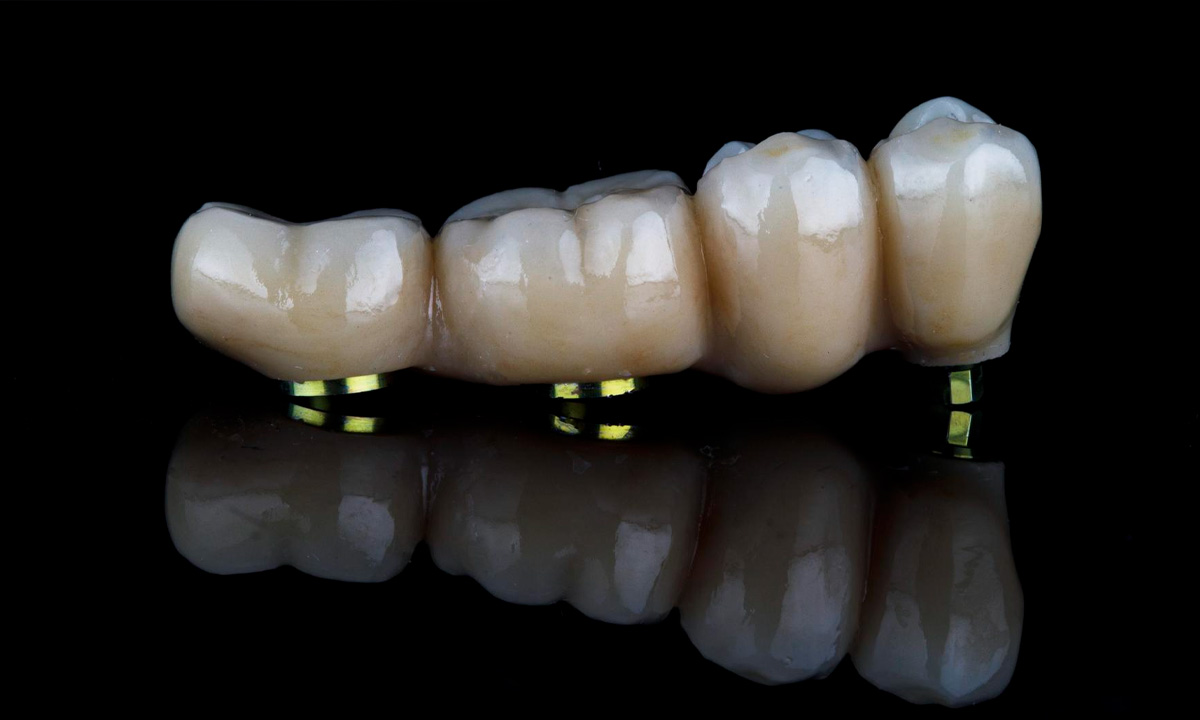Health
How to fix a loose dental bridge at home: Temporary solutions

A loose dental bridge can be an uncomfortable and worrisome issue, often causing difficulties in eating and speaking.
While a dental professional should address the underlying problem, understanding how to fix a loose dental bridge at home can provide temporary relief and prevent further damage until a dentist visit is possible.
Taking proactive steps to manage your dental bridge can contribute to your overall oral health and well-being.
This guide outlines safe, at-home solutions for managing a loose dental bridge and emphasizes the importance of professional care.
Why does a dental bridge become loose?
A dental bridge can loosen for several reasons, including wear and tear, gum disease, or issues with the supporting teeth. Identifying the cause of the problem is essential for effective treatment.
Common causes of loose dental bridges
- Weak bonding material: Over time, the adhesive securing the bridge may degrade, reducing its hold.
- Damage to supporting teeth: Decay or structural weakening of the anchor teeth can affect the stability of the bridge.
- Gum recession: Receding gums may create gaps, causing the bridge to shift.
- Physical trauma: Accidents or chewing hard foods can dislodge or loosen the bridge.
Is it safe to fix a loose dental bridge at home?
Temporary at-home fixes can provide short-term relief but should not replace professional dental care. These methods are intended to stabilize the bridge until you can see a dentist.
When to avoid at-home repairs
- If the bridge is completely detached, avoid reattaching it without guidance from a dentist.
- Severe pain, swelling, or signs of infection require immediate professional attention.
How to fix a loose dental bridge at home
Fixing a loose dental bridge at home involves cleaning the area, applying dental adhesive or wax, and avoiding pressure on the bridge for temporary stability.
1. Clean the area gently
Before attempting any fixes, ensure the area around the bridge is clean to prevent infection or further damage.
- Rinse your mouth with warm saltwater to remove debris and soothe the gums.
- Use a soft toothbrush to clean around the bridge and support teeth carefully.
2. Inspect the bridge
Examine the dental bridge to determine the cause of the looseness.
- Check for visible damage, such as cracks or worn adhesive.
- Ensure that the bridge is not completely detached, as this may require professional reattachment.
3. Apply dental adhesive
Dental adhesive can temporarily secure a loose bridge, providing stability until a dentist visit.
- Purchase over-the-counter dental adhesives or cement from a pharmacy.
- Dry the area around the bridge thoroughly using a clean cotton swab or tissue.
- Apply a small amount of adhesive to the underside of the bridge.
- Press the bridge gently into place and hold it for a few seconds to ensure a firm bond.
- Avoid eating or drinking for at least an hour to allow the adhesive to set.
4. Use orthodontic wax
If dental adhesive is unavailable, orthodontic wax can stabilize a loose bridge temporarily.
- Roll a small piece of orthodontic wax into a ball.
- Place the wax on the affected area to cushion and hold the bridge in place.
- Replace the wax as needed to maintain stability.
5. Avoid chewing on the affected side
To prevent further loosening, avoid putting pressure on the bridge by chewing on the opposite side of your mouth.
- Stick to soft foods that don’t require excessive chewing, such as yogurt, soup, or mashed potatoes.
- Avoid hard, sticky, or crunchy foods that may worsen the issue.
6. Manage discomfort
If the loose bridge causes discomfort, over-the-counter pain relievers or saltwater rinses can provide temporary relief.
- Follow the dosage instructions for pain relievers, such as ibuprofen or acetaminophen.
- Rinse with warm salt water two to three times a day to reduce inflammation and promote healing.
Preventing dental bridge issues
Proper care and maintenance of your dental bridge can minimize the risk of looseness or damage.
Practice good oral hygiene
- Brush twice a day with a soft-bristled toothbrush and fluoride toothpaste.
- Floss regularly, using a floss threader to clean under the bridge.
Avoid risky foods
Limit the consumption of hard, sticky, or crunchy foods that may damage the bridge.
Attend regular dental checkups
Routine visits to the dentist help identify potential issues early and ensure the longevity of your dental bridge.
When to seek professional help
While at-home solutions can stabilize a loose dental bridge temporarily, professional care is essential for addressing the root cause and ensuring a long-term fix.
Signs you need immediate dental care
- Severe pain or swelling around the bridge
- Signs of infection, such as redness, pus, or fever
- Complete detachment of the bridge
- Persistent looseness despite temporary fixes
Professional repair options
Dentists may use various techniques to repair a loose dental bridge, depending on the cause.
- Re-cementing: The dentist removes the old adhesive, cleans the area, and reattaches the bridge with new cement.
- Replacing the bridge: In cases of significant damage, a new bridge may be fabricated.
- Addressing underlying issues: Treatments like fillings, root canals, or gum disease therapy may be necessary to stabilize the supporting teeth.
Final thoughts
Learning how to fix a loose dental bridge at home can provide temporary relief and prevent further complications. By cleaning the area, using dental adhesive or wax, and avoiding pressure on the bridge, you can stabilize it until you can see a dentist.
However, professional care is essential for resolving the underlying issue and ensuring the long-term health of your dental bridge and supporting teeth. Regular maintenance and dental checkups are key to preventing future problems.
